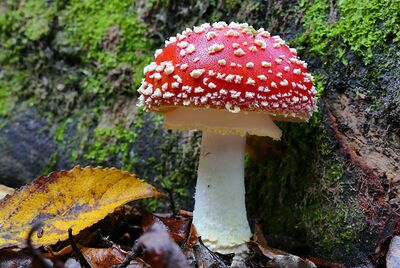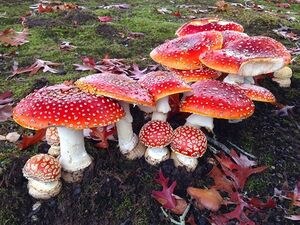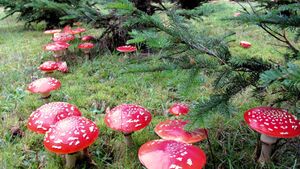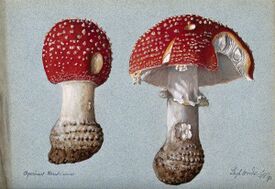Amanita muscaria

Amanitaceae
Amanita muscaria, also known as fly agarlic, is a basidiomycete fungus native to temperate and boreal regions in the Norther Hemisphere. Amanita muscaria are cosmopolitan species and associates with a variety of deciduous and coniferous trees. Easily recognizable for their iconic toadstool appearance, Amanita muscaria are poisonous and contain psychoactive constituents.
Taxonomy
Kingdom: Fungi
Phylum: Basidiomycota
Class: Agaricomycetes
Order: Agaricales
family: Amanitaceae
| Image | Reference name | Common name | Description | Family |
|---|---|---|---|---|
| Amanita muscaria var. muscaria | Euro-Asian fly agaric | Bright red fly agaric from northern Europe and Asia. |
Overview

. [2]
Ecology
Fly agarlic has been used historically as a pesticide by combining the mushroom with milk and spraying on plants. The practice of using amanita muscaria for pest management in Germanic and Slavic speaking parts of Europe lead to the fungus claiming the common name "fly agarlic" for its ability to kill flies.[2]


Medicinal Use

References
1. xxx
2. Wasson, R. Gordon. Soma: Divine Mushroom of Immortality. Harcourt Brace Jovanovich, 1973.
3. xxx
4. xxx 5. xx 6. xxxxx